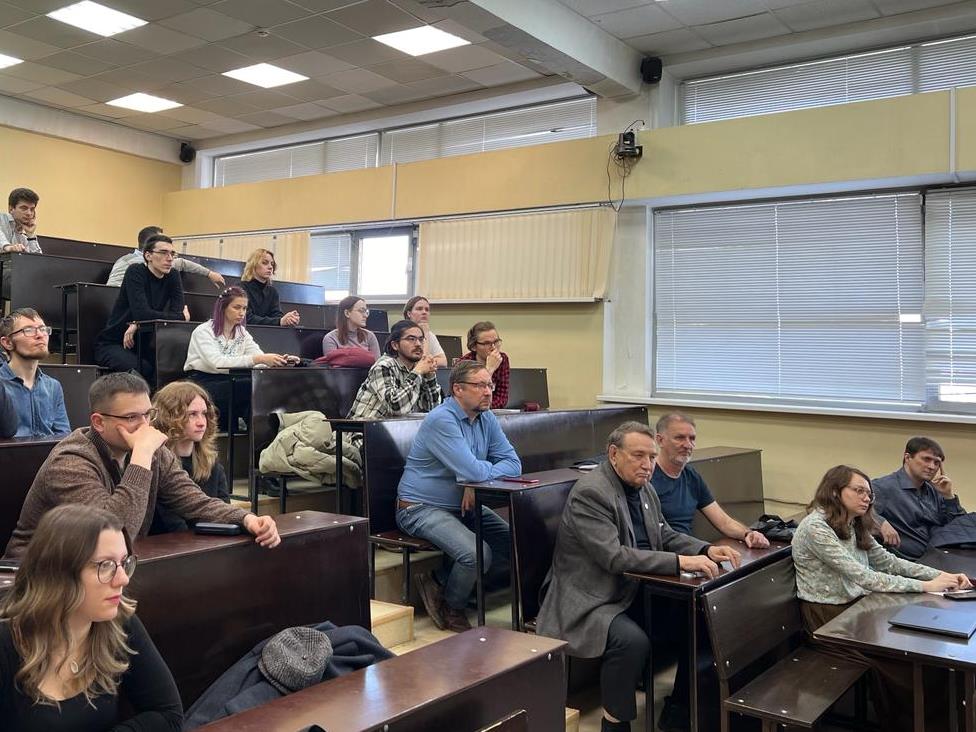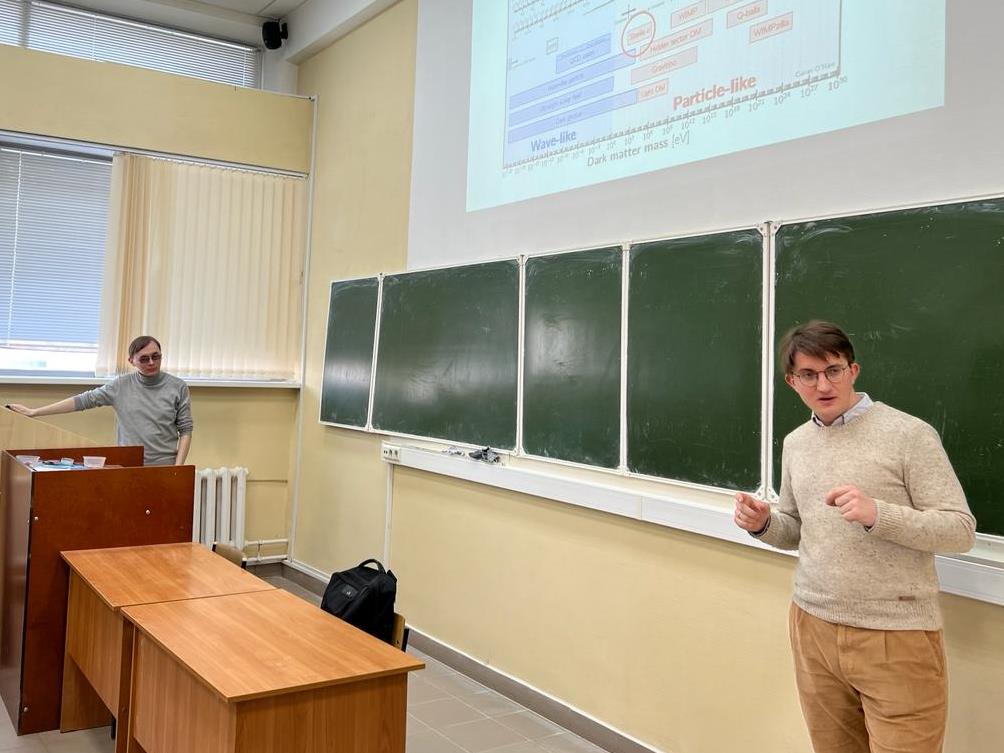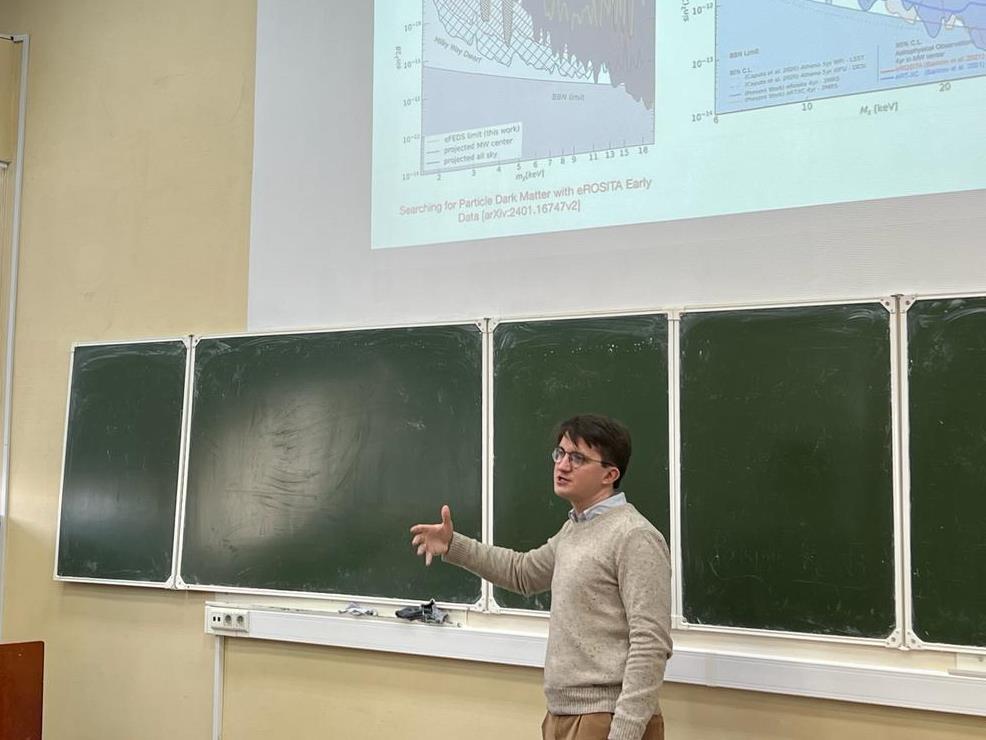Young scientists from Moscow share findings in dark matter studies




Representatives of the Russian Academy of Sciences presented their report Dark matter of the kiloelectronvolt mass range: theory, observations, prospects on 25 March.
The two invitees were Junior Research Associate of the Institute of Nuclear Research Vladislav Barinov and PhD student of the Institute of Space Research Yevgeny Zakharov.
Mr Barinov talked about various dark matter particle candidates such as sterile neutrinos, axions, WIMPs, etc., “For example, sterile neutrinos with masses of a few kiloelectronvolts can decay into active neutrinos and X-ray photons. At the same time, processes are possible in which dark matter particles annihilate with each other, generating X-ray photons. And this X-ray radiation, which is diffuse radiation from the halo (spherical neighborhood) of our Galaxy, can be detected by X-ray observatories.”
He went on to explain how the signal from the decay of sterile neutrinos, which he believes are the most likely candidates to be dark matter particles, can be estimated, and described the observational strategy, “I have given the results of constraints on the square of the mixing angle of sterile neutrinos as a function of their mass for various missions, and in particular for Pavlinsky ART-XC X-ray telescope, which is installed aboard the Spektr-RG space orbital observatory.”
Zakharov presented new scientific data obtained by the X-ray telescopes of the SRG/ART-XC, NuSTAR and XMM-Newton space observatories, which are relevant to the search for traces of decay and annihilation of dark matter particles. In addition, he described how their science team is working with the ART-XC space telescope to obtain signals from the decay of sterile neutrinos.

